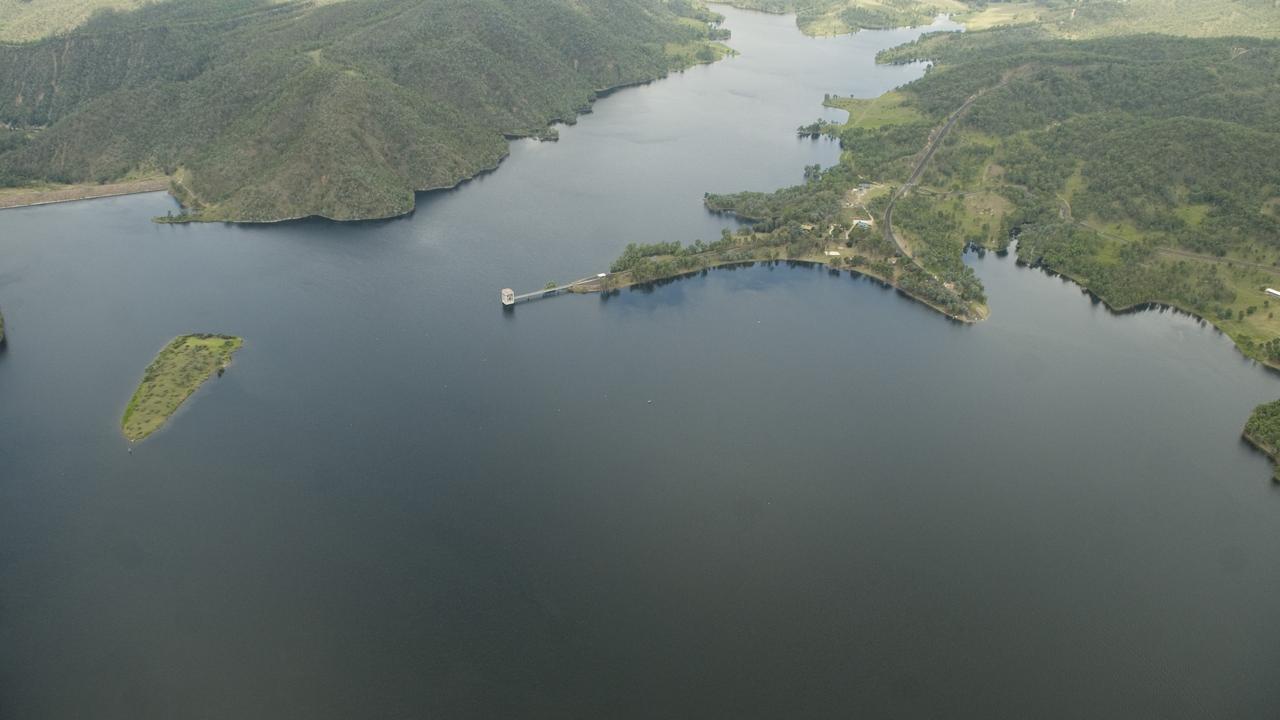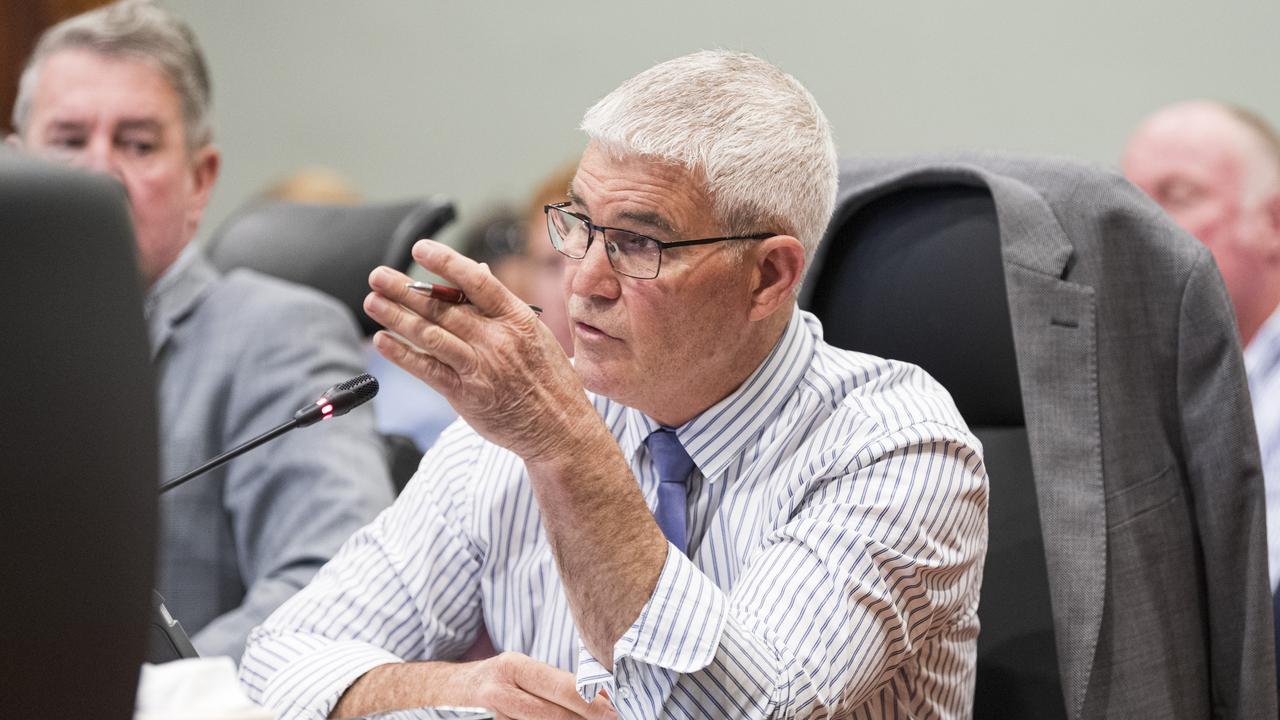Toowoomba council to reduce Cressbrook Dam capacity to 70 per cent to cater for $270m spillway upgrade
Millions of litres of quality drinking water will be released from Toowoomba’s primary dam as a direct result of the looming Cressbrook spillway upgrades, which sparked an exchange between two councillors over the organisation’s planning.

Council
Don't miss out on the headlines from Council. Followed categories will be added to My News.
Thousands of megalitres of potable water will be released from Toowoomba’s main dam over the coming months to ensure critical upgrade works start on time, in a move that was slammed as “a lack of foresight”.
Councillors voted at Tuesday’s committee meeting to reduce Cressbrook Dam’s water levels from its current point of 83 per cent to 70 per cent from July — representing a drop of 115ML per day on average.
The reduction is required to allow for the timely delivery of the $270m Cressbrook spillway upgrades, which need to be completed by late next year and are already behind budget by millions of dollars.
Along with standard water consumption (which is currently averaging just under 32 megalitres), it will mean the council will need to release on average 84 megalitres a day downstream.

According to the report by water and waste general manager Jaek Prassier, the move was required after engineers for the upgrade project determined there was an “unacceptable risk” of the dam failing completely should the works start at on it at the current capacity.
“It is anticipated that the drawing down of the water level will be primarily managed through releasing water via the riparian release valve, however there may be other opportunities to manage consumption within the current water allocation and licence extraction limits.
“The total volume that will need to be drawn down will be dependent on inflow, evaporation and any consumption management initiatives that may be implemented during the period until the reduced full supply level (RFSL) is reached,” he wrote.
“Tests have revealed that currently, a maximum of 84 ML/day can be released from the dam via the riparian release structure.
“This means, the period to achieve the RFSL is currently estimated at approximately 122 days from the date of commencement.”
Mr Prassier said the decision to recommend the release of drinking water was not made lightly, arguing it would reduce delays to the project and make it safer for workers and downstream users.
“This now extended time frame to achieve the revised FSL only further demonstrates the need to commence drawdown activities as soon as possible to ensure that future issues that may occur have the greatest potential to be managed without additional impact to the project schedule and budget,” his report said.
The loss of thousands of litres of quality drinking water for a region prone to droughts is the latest consequence of the troubled Cressbrook upgrades, which also threaten to blow out the council’s debt levels to as high as $300m if higher levels of government don’t provide support.

Councillor Tim McMahon slammed the situation and accused previous councils of failing to prepare for the inevitable upgrades that have been known since when John Howard was prime minister.
“I’ve been around this table since 2020 and this was given to us in 2022 as a looming disaster, (and) it’s been on our books since 2003?” he said.
“From 2016 to 2022 we were well under 70 per cent for six years in a row.
“We are being forced to make a horrible decision because the council lacked foresight.
“We are making a decision now because people lack foresight, and I can’t reconcile that in my brain, I really struggle with the task at hand.”
Ms McMahon’s comments drew the ire of veteran councillor Bill Cahill, who called them “bordering on disrespectful” and said they discounted the work done by council over the years both before and after amalgamation.
“(Historical discussions around the upgrades were) based on collective advice from technical experts and the individuals around the table at the time over many years and other agents that weighed in on this, such as advocacy and funding and timing and lobbying for funding assistance for this, as we continue to do now, and advice at the time of whether it was in the capital works program of not — that’s all a balanced history,” he said.
“I think from a balanced perspective, (the comments were) rudimentary, bordering on disrespectful.”

Rebates for residents are a possibility, with Mr Prassier’s department to bring a report back to council in July exploring all possible ways the community could benefit from the releases.
The council is also reportedly exploring changes to its current agreement with SEQWater to do with the Wivenhoe pipeline.
But this would depend on council determining water released from Cressbrook would flow back into Wivenhoe.
In positive news, the TRC is on track to deliver its business case into the $270m upgrades to the state government by June 30.
The document is a requirement if the state is to provide financial support towards the project.









